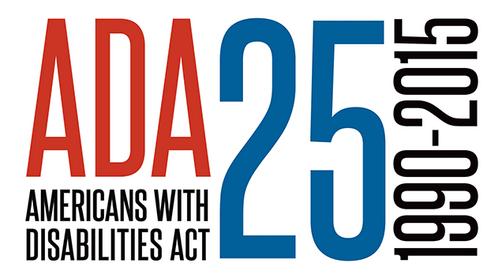ALL Aboard: 25 Years Ago, ADA Opened Transit to People with Disabilities
Smithsonian Hosts Festival ADA: 25 Years of Disability Civil Rights

Photo courtesy Tom Olin.
In the 1980s, protesters calling for better accessibility on public transportation blocked buses with their wheelchairs. Drawing dramatic attention to the lack of wheelchair lifts on buses was an important impetus for Congress to pass the Americans with Disabilities Act (ADA) of 1990.
 Twenty-five years later, buses are the most accessible form of transportation for people with disabilities. Aided by hydraulic lifts and other features, people with disabilities can ride 99.8 percent of U.S. public transit buses.
Twenty-five years later, buses are the most accessible form of transportation for people with disabilities. Aided by hydraulic lifts and other features, people with disabilities can ride 99.8 percent of U.S. public transit buses.
Bus accessibility is just one of the good-news stories as we approach this Sunday's 25th anniversary of the ADA. The public transportation industry has been working hard to comply with the ADA, and it shows. America's buses, light rail, heavy rail, and commuter trains range between 71 and 100 percent ADA-compliant.

Photo courtesy Larry Levine, WMATA.
And every transit facility built since ADA passage is accessible.
However, older, pre-1990 stations still pose a challenge. Transit agencies retrofit as budgets allow, but we can do better, as anyone in a wheelchair can tell you. While the Federal Transit Administration is working to ensure that transit agencies address accessibility at older stations when they renovate, that work is typically very expensive. Increased funding in infrastructure investment through a long-term transportation bill like GROW AMERICA would certainly help.
Yesterday, I was in Bethesda, Maryland to highlight an example of a local government tackling bus stop accessibility, another one of the tough issues. Buses may be a great option for people with disabilities, but not if they can’t get to the bus stop! Montgomery County embarked on an $11 million rehabilitation program of the county’s 5,340 stops in 2006. Today, the county has improved safety and increased accessibility at 89 percent of its bus stops, with improvements to the remaining 11 percent in its sights.
Transit ridership is on the rise, and people with disabilities make up one of the groups most reliant on transit.
In the next 30 years, the U.S. is expected to grow by 70 million more people. Transit will continue to be the most efficient and effective way to large numbers of people to get around. To make sure it is inclusive for all Americans, we need to do everything we can to increase accessibility.
To celebrate the 25th anniversary of the Americans with Disabilities Act, the Smithsonian's National Museum of American History is hosting a special ADA Festival today through Sunday, July 26. The festival includes an exhibit from DOT on accessible travel. You can find more information at http://s.si.edu/1OqmCky.
